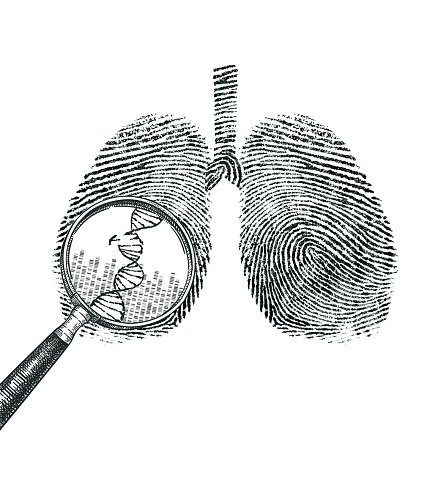Origins of Lung Cancer in Never Smokers

Photo: NCI
Researchers from NCI identified three subtypes of lung cancers in people who never smoked. The results, which appeared in Nature Genetics, could help guide more precise lung cancer treatments.
About 10-25 percent of all lung cancers occur in people who have never smoked; yet most genomic studies of lung cancer have been done in people who smoked at some point in their lives. Thus, a dearth of information exists about lung cancer in never smokers.
With support from NHLBI and NIEHS, the research team sequenced the genomes of tumors from 232 lung cancer patients who never smoked. The researchers did not find patterns of mutations associated with smoking. This suggests that lung cancer in never smokers results from mechanisms distinct from that caused by smoking.
The team identified three subtypes of tumors based on a type of mutation called copy number alterations. They named these subtypes after musical terms for relative “loudness.”
The “piano” (quiet) subtype was most common, accounting for almost half of the never smokers’ tumors. It featured fewer mutations than the other two subtypes and greater variation among cells within the same tumor. Piano tumors also had the longest telomeres, which suggests the tumor cells had divided fewer times than the other subtypes.
The researchers estimated that in piano tumors, the mutations allowing tumor cells to grow and spread first occurred, on average, about a decade before diagnosis. These tumors thus grew very slowly. The unique features of the piano subtype suggest that at least some of them were derived from reactivated stem cells.
By contrast, the “mezzo-forte” (moderately loud) and “forte” (loud) tumors appeared to grow much faster than the piano tumors. They also often had mutations in a gene, EGFR, that is often altered in lung cancer. In forte tumors, the entire genome was often duplicated, which is often seen in lung cancers among people who smoke. Five mutations often found in forte and mezzo-forte tumors were each estimated to double the risk of death.—adapted from NIH Research Matters
